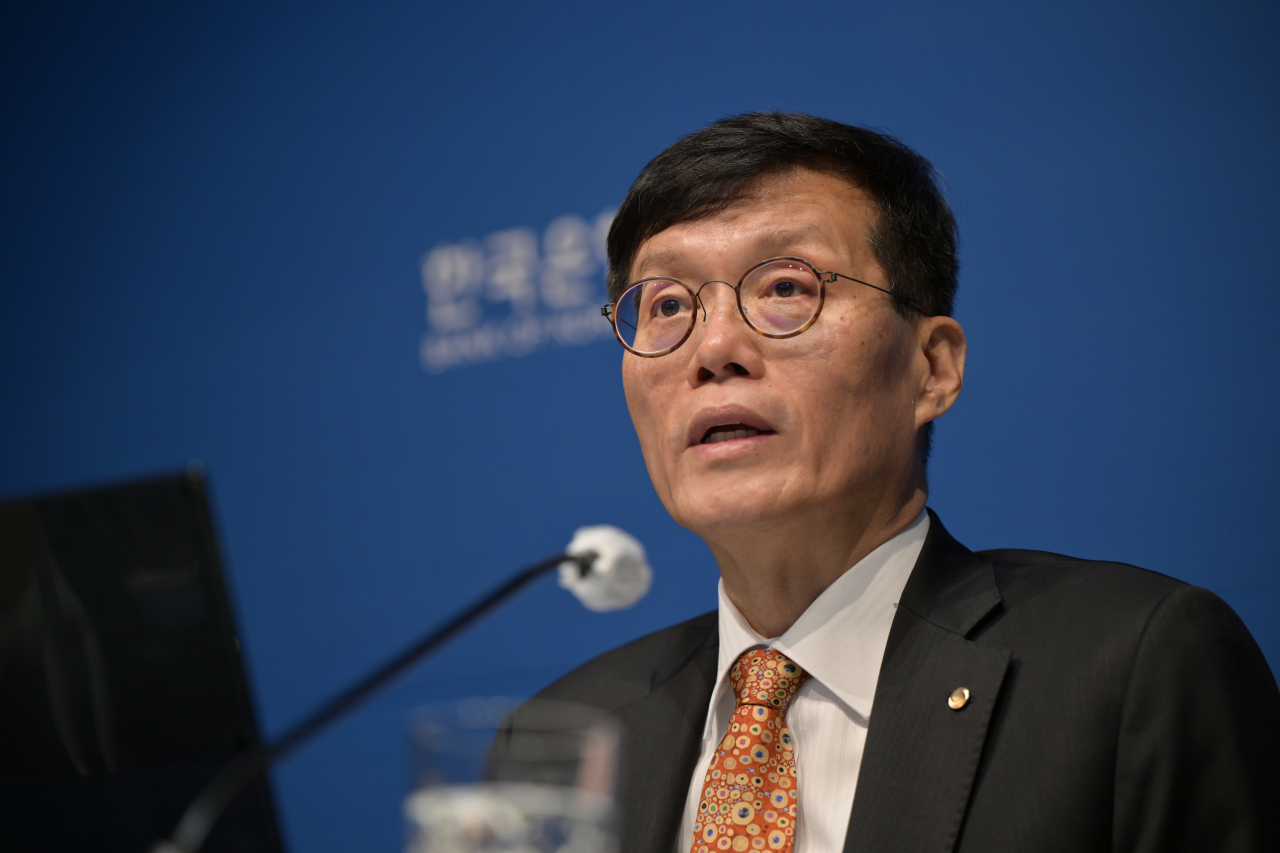
The Bank of Korea held the base policy rate at 3.5 percent for the 11th consecutive time Thursday, while raising the country’s economic growth estimate from the previous 2.1 percent to 2.5 percent.
The central bank’s monetary policy board unanimously agreed to keep the key rate at the current level, BOK Gov. Rhee Chang-yong said at a press conference held shortly after the rate-setting decision.
“With the strengthened upward pressure on the inflation outlook from April, it will take some more time to have confidence that the inflation will fall to the (2 percent) target,” Rhee said. “The current monetary tightening policy will be maintained sufficiently until it is confirmed that the inflation will drop to the target level.”
Meanwhile, the BOK raised the estimate for the country’s gross domestic product growth rate from the previous 2.1 percent to 2.5 percent.
The estimate revision came as Korea’s GDP growth stood at 1.3 percent in the first quarter of this year, double the initial market expectation. It was the first time for the quarterly figure to surpass the 1 percent bar since Q4 2021.
“Exports were larger than expected, while imports were less than expected," Rhee explained.
Other economic institutions such as the Organization for Economic Cooperation and Development and the Korea Development Institute also raised the growth rate projection for this year by 0.4 percentage point to 2.6 percent, based on the “surprise growth” in the Q1 GDP.
Yet the BOK’s inflation outlook was kept at 2.6 percent despite the projection of a boost in economic recovery.
“Net exports took up about three-quarters of the reconsideration in the growth rate,” Rhee said, explaining that export-led growth has a relatively weaker impact on inflation compared to a recovery driven by domestic demand.
“The domestic demand is stronger than our expectations, yet it is yet to say the demand is strong overall when compared to GDP growth,” he said.
Next year’s growth rate forecast was cut from 2.3 percent to 2.1 percent, while the inflation estimate was maintained at 2.1 percent.
Rhee continued to maintain a hawkish stance on the monetary policy stance for the latter half of this year despite the market expectations of a rate cut happening in the coming months.
“The uncertainty in the timing of a rate cut has strengthened due to stronger inflationary risks,” Rhee said.
He further warned that if the central bank drops its aggressive monetary policy too early, it could lead to a slowdown in disinflation, risk in the currency exchange rates and household debts. But if it takes a pivot in the policy stance too late, it could result in market risks such as the weakening of domestic demand recovery.
“We will decide on the monetary policy for the second half of this year considering both risks,” Rhee said.



















![[Today’s K-pop] Treasure to publish magazine for debut anniversary](http://res.heraldm.com/phpwas/restmb_idxmake.php?idx=642&simg=/content/image/2024/07/26/20240726050551_0.jpg&u=)